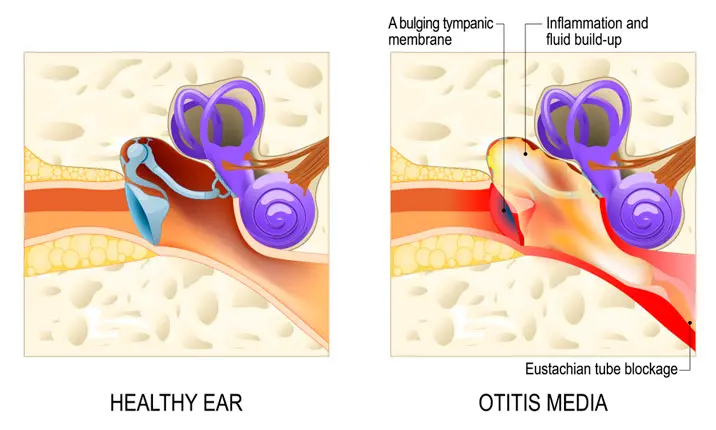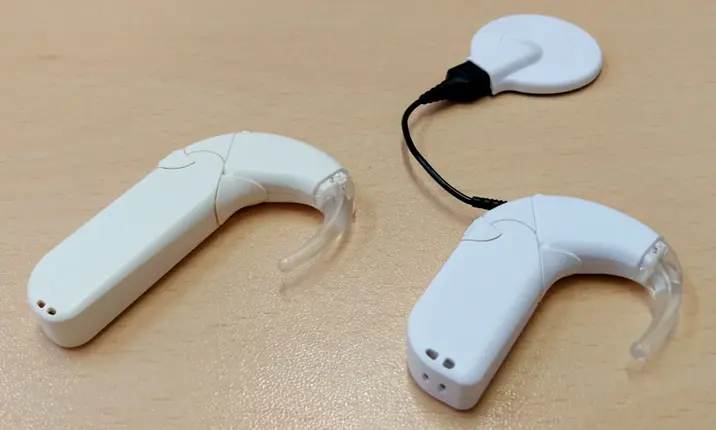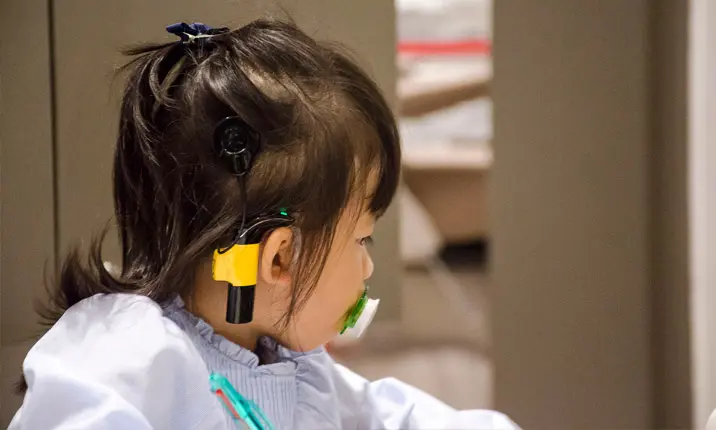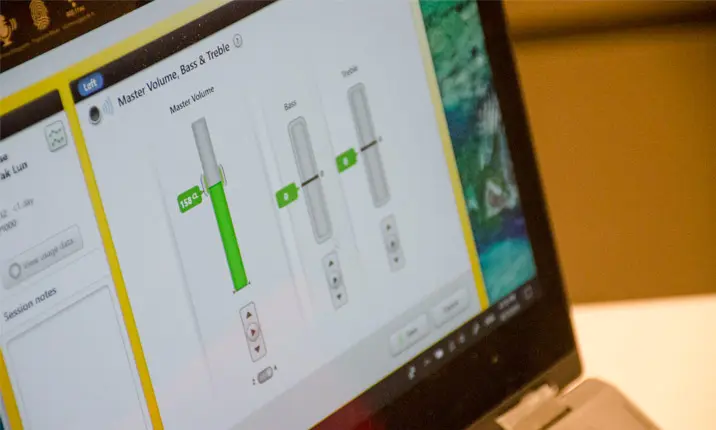Hearing loss is one of the most common medical conditions in Singapore, with as many as 360,000 persons in Singapore affected. Of these, many suffer from disabling hearing loss, which is defined by the World Health Organisation (WHO) as being unable to hear more than 40dB of sound in one ear for adults. In children, this is defined as an inability to hear more than 30dB in the better hearing ear.
What causes hearing loss
There are typically 3 causes of hearing loss in children, and these include:
Problems at birth
Hearing loss for some children is hereditary.
In others, the condition develops during pregnancy or during prenatal care. Hearing loss can also occur when a pregnant woman has medical conditions such as diabetes or preeclampsia. Premature babies are at a higher risk as well.
Otitis media
A middle ear infection, this occurs in young children when the Eustachian tubes connecting the middle ear to the nose are not fully developed. Fluid can build up behind your child's eardrum and cause an infection. In severe and long-lasting cases, this condition can cause permanent hearing loss.
Illness or injury during childhood
Young child can develop hearing impairments following certain illnesses such as meningitis, encephalitis, measles, chickenpox, and the flu. Your child can also lose their hearing because of head injuries, being exposed to very loud noises. Hearing loss can also be a serious side effect of medication.
The tell-tale signs of hearing impairment
If your child was not diagnosed with hearing loss at birth, this does not mean it doesn't exist. If you notice any of the following symptoms in your child, consult your doctor immediately:
- Constantly cranky for no clear reason
- Ear pain
- Fever
- Has little energy
- Making simple sounds that taper off
- No reaction to loud noises
- No response to your voice
- Often asks for the TV to be louder
- Pulling and rubbing an ear
- Stops paying attention
What are cochlear implants?
Cochlear implants are special hearing devices that are surgically implanted which directly stimulate the hearing nerve endings in the cochlea.
They comprise 2 components. The first is an external speech processor that is worn on the ear where it communicates via magnet coupling with the internal component which is surgically implanted under the skin into the skull bone.
The speech processor picks up the sound from the environment and sends the information in the form of selective electrical current discharges to multiple electrode plates located on a very thin tubular electrode inserted into the cochlea. These electrical currents are what stimulates the nerve endings in the cochlea and then gets transmitted along the hearing nerve towards the brain.
What are the different types of cochlear implants?
The most common type of cochlear implants only provide electrical stimulation to the hearing nerve.
The second less common type of cochlear implants are called Hybrid Implants or Electro-Acoustic Stimulation (EAS) Implants. These hybrid implants have an additional hearing aid component that provides acoustic sound amplification for the low frequency sounds. These hybrid implants are meant to help those with partial deafness where the deafness affects primarily the high frequency sounds.
There are variations to the size and design of both the internal and external components. The most visible portion of a cochlear implant system is the external speech processor and they come in two main designs. The most common is a behind-the-ear (BTE) or On-the-Ear speech processor that is worn on the ear. This has a cable that connects to a magnet that sticks to the scalp where the implanted magnet is. The other type is an Off-the-Ear speech processor which is where the processor is incorporated entirely onto the magnet.
Which patients are most suitable for cochlear implants?
The best benefit are in patients with bilateral (both sided) severe to profound sensorineural hearing loss. There must be an intact cochlear nerve. An MRI scan is usually done preoperatively to determine the presence of an intact cochlear nerve. Those with normal cochlea (hearing organ) anatomy also tend to do better than those with abnormalities in the structure of the cochlea.
Cochlear implants are useful across all age spectrums, from a very young child, to a very old patient with hearing loss. Patients can be both pre-lingual (before acquiring language) or post-lingual (after acquiring language).
Cochlear implant surgery
Surgery is performed under general anaesthesia and would last around 3 hours.
The surgery starts with a post aural incision behind the ear. This measures between 4 – 6cm in length. The underlying skull bone is exposed and operation proceeds with drilling a hole through the air spaces in the skull towards the middle ear.
Once in the middle ear, the natural opening end of the cochlea called the round window is seen and this is used as the entry point for the insertion of the implant electrode. The implant body casing is recessed into a well that is drilled in the skull bone behind the ear. At the end of surgery, the entire cochlear implant electrical circuit is tested remotely using Neural Response Telemetry which allows an external speech processor to pair with the internal implant and the implanted electrode is tested for electrical activity in the cochlea.
The wound is closed and the head is bandaged. Patients typically will require a night's stay in hospital to recuperate.
Will a patient be able to hear immediately after surgery?
It is only between 2 – 3 weeks after surgery, when the patient undergoes the first "switch-on", or activation of the cochlear implant that a patient starts to hear.
Special digital programming of the device allows the patient to detect sound and hear while ensuring that the stimulation is not overwhelming or painful. A series of regular "mapping" sessions will also be prescribed to help the patient hear sounds as accurately as possible. Feedback is taken from the patient and family about the performance of the cochlear implant and the new "map" or digital program of the cochlear implant will be refined and built upon the last.
At the same time, the patient will undergo a series of post-operative sessions of speech and language rehabilitation. This is vital for young children implanted with cochlear implants, who may have had no language ability prior to implantation.
This is where practice and the support of family and caregivers is important to help the child learn to hear and speak as normally as possible rather than depend on lip reading, visual cues and gestures for communication.
Limitations to cochlear implants
There are some limitations to cochlear implants and they occur in the following circumstances:
Absent cochlear nerve
This is the absence of the nerve which transmits sound stimulus to the brain. However, recent medical reports point to the possibility that sound stimulus can be passed onwards to the brain from the cochlea by other nerves such as the vestibular nerve.Absent inner ear
Some children are born with severe inner ear malformations, where there is absolutely no semblance of any part of the inner ear formed, whether the cochlea or the vestibular organ (balance organ). In this instance, there is no organ to insert the cochlear implant into.Ossified cochlea
This is where the internal chambers of the cochlea become obliterated with new bone formation. When this happens, it is not possible to insert the thin flexible cochlear implant electrode into the cochlea. The most common cause of this is after a bout of meningitis where the inflammation initially leads to fibrosis of the internal chambers of the cochlea followed by new bone formation. The second most common cause is through trauma and fractures of the cochlea.
What is the lifespan of these implants?
The internal component that is implanted is expected to last the lifetime of the patient and does not need to be replaced. The external component can also last a long time, in excess of 10 years. However, with improving technology and digital programming, the external processors become a lot more advanced and miniaturised and users may choose to upgrade to the newer processors every few years.
















